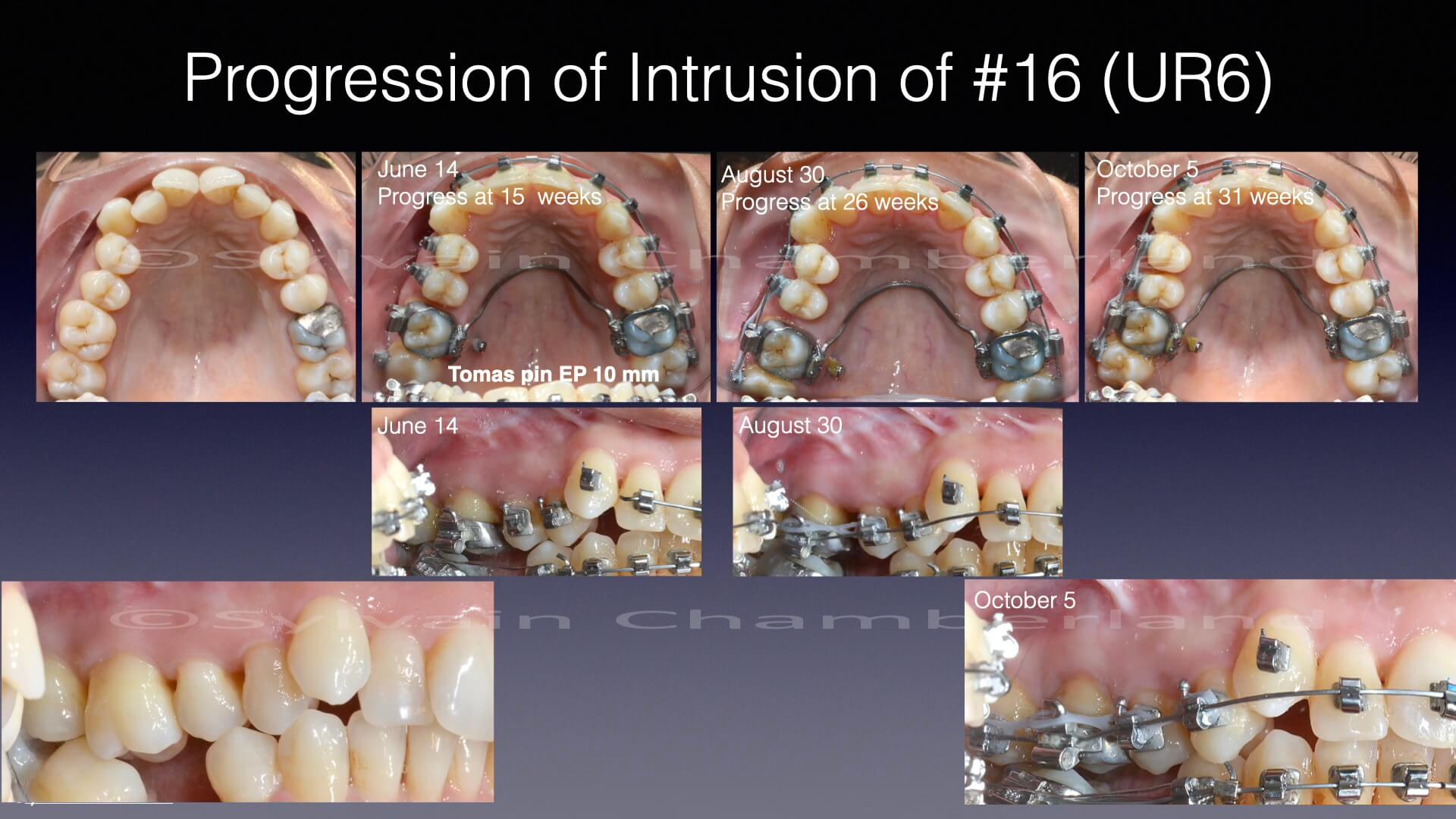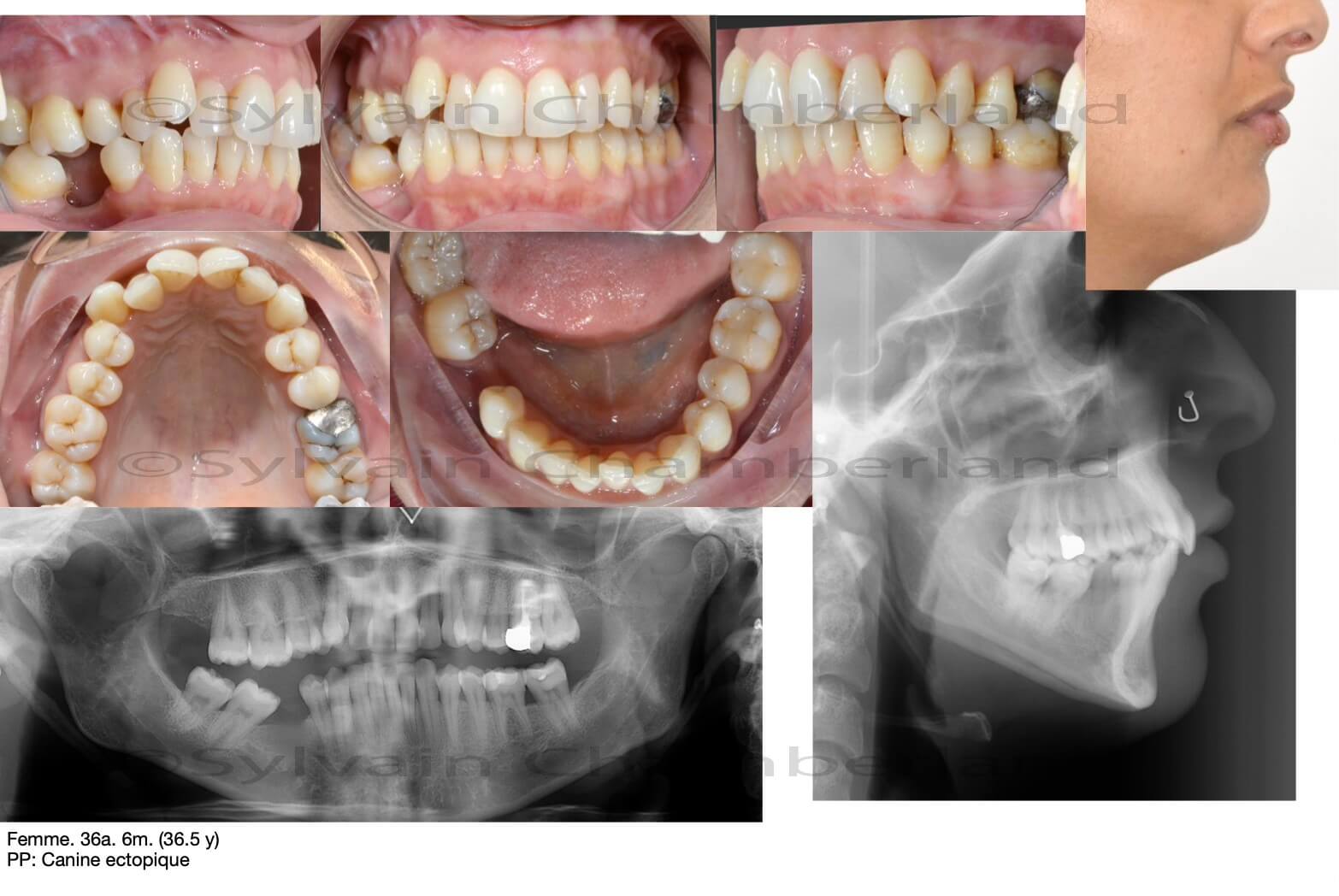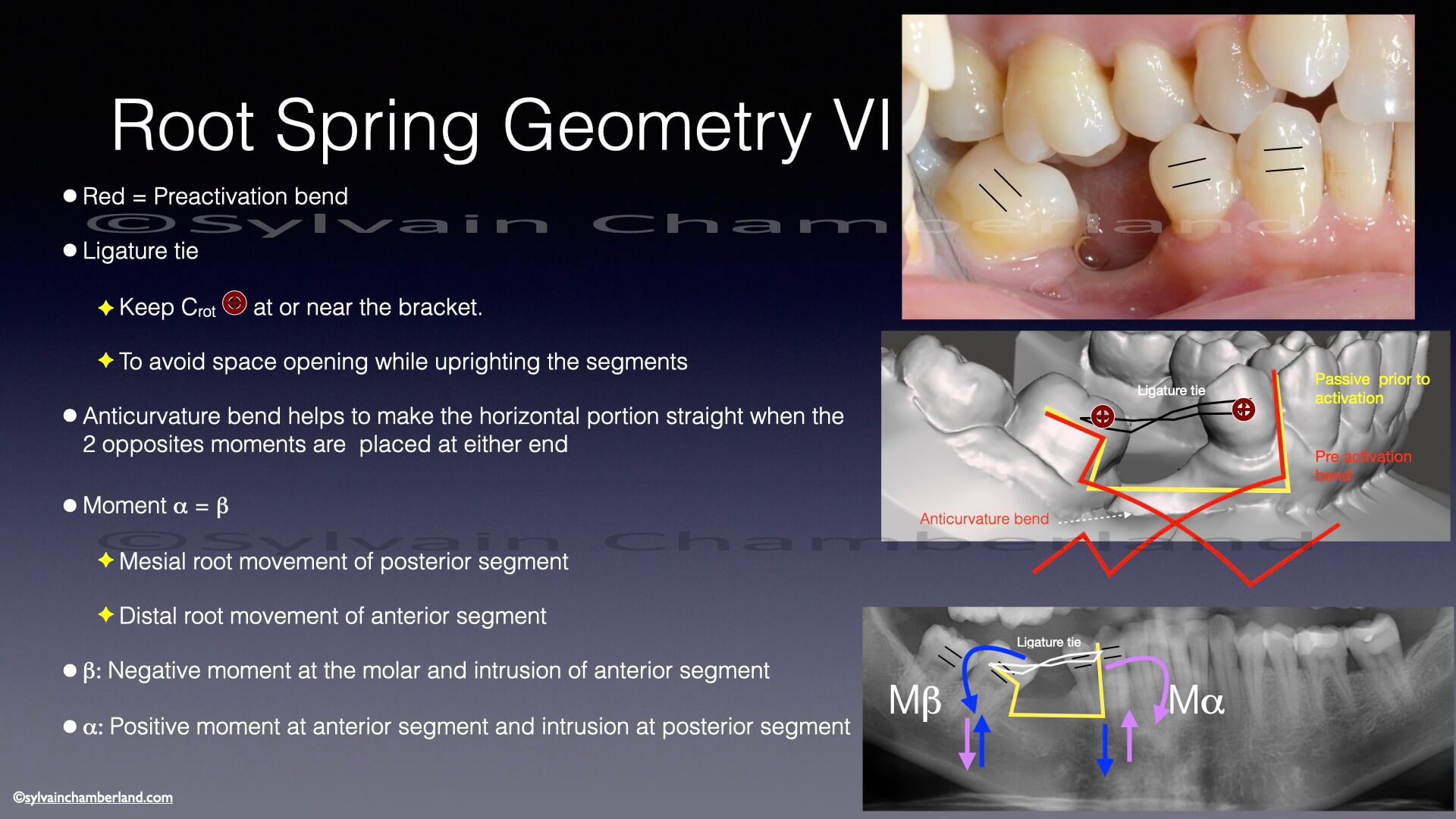Root Spring and Lingual Arch
On October 8, I published photos 1 and 2 of this case of a 36-year-old woman with a host of orthodontic problems that are not all that easy to manage. At the outset, I mention that periodontal treatment was carried out prior to orthodontic treatment.
The purpose of this publication is to show the biomechanics I used to straighten the lower right molar (#47) and intrude the upper right molar (#16).
For tooth #47, I combined the use of a fixed-removable lingual arch with specific preactivation folds to generate two equal and opposite moments (slide #6). Slide 4 shows an inadequate force system (geometry IV) for straightening molar #47, as it causes molar extrusion and premolar intrusion, which is counterproductive.
I also used the lingual arch to correct the mesial rotation of #47 (slide #8).
Slide 5 shows the system of forces generated by a root spring. The aim is to have two equal and opposite moments, with no vertical forces acting on the anterior and posterior segments, as in VI geometry.
Slide #6 describes how I configured and pre-activated the spring in .019 X .025 TMA.
Slide #9 shows the evolution of the root spring over 15 weeks.
Slide #10 shows the straightening obtained by comparing the initial radiograph with the one at 31 weeks. The 2 small arrows indicate the tooth’s root movement.
Slide #11 shows the progression of intrusion and distalization of tooth #16 with an anchoring minivis (Tomas pin EP 10 mm). A .032 x .032 TMA transpalatal arch is required to maintain arch width.












Ask a question or leave a comment (0)